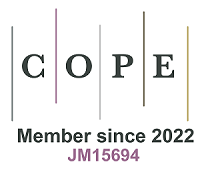fig1

Figure 1. Overview of the experiment. miRNA: MicroRNA; A and B: principle of the Nanostring nCounter assay; A: miRNAs (green) are too short for standard probe attachment. To overcome this, a temporary bridging oligo (purple) is used to extend the length of each miRNA through the attachment of a DNA-based miRtag (orange) by splinted ligation; B: during the hybridisation step, the extended miRNA: miRtag is hybridised to a biotin-tagged capture probe (yellow) and a reporter probe (blue) carrying a unique fluorescent barcode tag (6 coloured circles). After washing, the target/probe complexes are immobilised to a solid substrate using the biotin tag and data recorded from the barcode as individual counts; C: set-up of the rat v1.5 miRNA codeset, which contains probes for 420 rat miRNAs as well as positive, negative and ligation controls, exogenous spike-in controls and housekeeping mRNA probes; D: flowchart to illustrate the workflow described in this paper. Figure made with Biorender.









